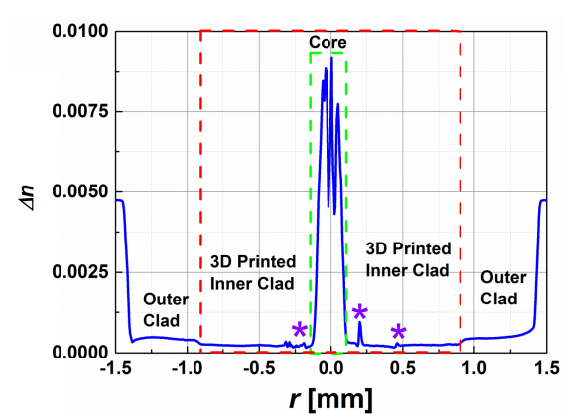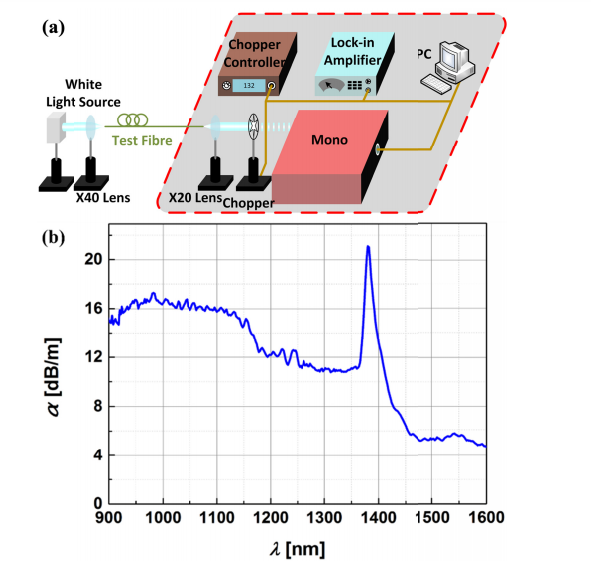 The telecommunications industry is currently front page news including the AT&T/Timewarner acquisitions, the pending Fox acquisition by Comcast or Disney and a new CEO at Verizon who is a technologist with a focus on 5G. Once the current merger activity further settles, we anticipate a new, focused, and competitive telecomm industry. The use of additive manufacturing in the telecommunications sector has introduced new solutions for advancements in current technology. Telecommunication components are expensive to prototype, manufacture and install while spare parts are also significant costs to many new projects and existing ones. Using additive manufacturing, parts such as electrical components that have arbitrary and geometrically intricate shapes/sizes can be easily prototyped and integrated onto printable circuits. Antennas, sensors and power stations for IT departments, telecommunication companies, cable operators, and related companies are now being deployed with 3D printed parts as the technology becomes more widely accepted in the sector. 3D printing components for telecommunication purposes is eligible for Research and Development tax credits.
The telecommunications industry is currently front page news including the AT&T/Timewarner acquisitions, the pending Fox acquisition by Comcast or Disney and a new CEO at Verizon who is a technologist with a focus on 5G. Once the current merger activity further settles, we anticipate a new, focused, and competitive telecomm industry. The use of additive manufacturing in the telecommunications sector has introduced new solutions for advancements in current technology. Telecommunication components are expensive to prototype, manufacture and install while spare parts are also significant costs to many new projects and existing ones. Using additive manufacturing, parts such as electrical components that have arbitrary and geometrically intricate shapes/sizes can be easily prototyped and integrated onto printable circuits. Antennas, sensors and power stations for IT departments, telecommunication companies, cable operators, and related companies are now being deployed with 3D printed parts as the technology becomes more widely accepted in the sector. 3D printing components for telecommunication purposes is eligible for Research and Development tax credits.
The Research & Development Tax Credit
Enacted in 1981, the now permanent Federal Research and Development (R&D) Tax Credit allows a credit that typically ranges from 4%-7% of eligible spending for new and improved products and processes. Qualified research must meet the following four criteria:
- Must be technological in nature
- Must be a component of the taxpayer’s business
- Must represent R&D in the experimental sense and generally includes all such costs related to the development or improvement of a product or process
- Must eliminate uncertainty through a process of experimentation that considers one or more alternatives
Eligible costs include US employee wages, cost of supplies consumed in the R&D process, cost of pre-production testing, US contract research expenses, and certain costs associated with developing a patent.
On December 18, 2015, President Obama signed the PATH Act, making the R&D Tax Credit permanent. Beginning in 2016, the R&D credit can be used to offset Alternative Minimum Tax, for companies with revenue below $50MM and for the first time, pre-profitable and pre-revenue startup businesses can obtain up to $250,000 per year in payroll taxes and cash rebates.
3D Printing Uses in Telecommunications
MIMO
 MIMO antennas (multiple input, multiple output) are antenna technology for wireless communications in which communication circuits are combined to minimize errors and optimize data speed. Recently, communications manufacturers have been experimenting with 3D printing the powerful antennas. Utilizing a high-resolution stereolithography 3D printer, the printing process is entirely precise as it is capable of printing 27.2 x 27.2 x 17 mm antennas that can be completed within half an hour. The printed antenna is made of a photosensitive resin, ensuring all its surfaces are metalized and conductive, further enhancing frequency characteristics.
MIMO antennas (multiple input, multiple output) are antenna technology for wireless communications in which communication circuits are combined to minimize errors and optimize data speed. Recently, communications manufacturers have been experimenting with 3D printing the powerful antennas. Utilizing a high-resolution stereolithography 3D printer, the printing process is entirely precise as it is capable of printing 27.2 x 27.2 x 17 mm antennas that can be completed within half an hour. The printed antenna is made of a photosensitive resin, ensuring all its surfaces are metalized and conductive, further enhancing frequency characteristics.
Orange
 Orange is one of the world’s leading telecommunications operators; headquartered in France, they provide to 200 million mobile customers and 18 million fixed broadband customers. Orange is working to provide clean renewable energy to millions of on-the-grid users as well as expanding to those off the grid through the use of 3D printed components optimizing many power sources such as wind turbines. Small wind turbines are being used to improve efficiency and optimize mobile connection performance but can be expensive to build in mass production. Orange adopted 3D printing to utilize for the wind turbines as they are printing blades that are significantly reducing the cost of the units, as well as improving performance to provide impacts to the lives of those living in energy poverty along with those currently already using energy solutions.
Orange is one of the world’s leading telecommunications operators; headquartered in France, they provide to 200 million mobile customers and 18 million fixed broadband customers. Orange is working to provide clean renewable energy to millions of on-the-grid users as well as expanding to those off the grid through the use of 3D printed components optimizing many power sources such as wind turbines. Small wind turbines are being used to improve efficiency and optimize mobile connection performance but can be expensive to build in mass production. Orange adopted 3D printing to utilize for the wind turbines as they are printing blades that are significantly reducing the cost of the units, as well as improving performance to provide impacts to the lives of those living in energy poverty along with those currently already using energy solutions.
Optomec
 Optomec is a 3D manufacturing company based in Albuquerque, New Mexico that specializes in printing solar cells, flexible electronics, organic electronics, and touchscreen components, among many other parts, and are now experimenting with 3D printing functional parts for a phone such as the antenna. 3D printing a phone antenna now provides phone companies flexibility in the design and allows for a reconfiguration of the whole production line. With the ability to mass produce small phone components such as an antenna with 3D printing, no longer will harmful solvents and materials be needed for such parts and it will even provide a less expensive solution for phone companies whose profit margins are already razor thin.
Optomec is a 3D manufacturing company based in Albuquerque, New Mexico that specializes in printing solar cells, flexible electronics, organic electronics, and touchscreen components, among many other parts, and are now experimenting with 3D printing functional parts for a phone such as the antenna. 3D printing a phone antenna now provides phone companies flexibility in the design and allows for a reconfiguration of the whole production line. With the ability to mass produce small phone components such as an antenna with 3D printing, no longer will harmful solvents and materials be needed for such parts and it will even provide a less expensive solution for phone companies whose profit margins are already razor thin.
Voxel8 Inc.
 Voxel8 is a 3D manufacturing company that is adept at printing electronic components especially for telecommunications. The company from Somerville, Massachusetts has developed a 3D printer capable of printing one-piece, functioning electronic devices such as a smart phone. The printer creates digital manufacturing systems that can print numerous types of components such as antennas, electromagnetic coils or stacked integrated circuits, among many more. Though capable of printing whole pieces, some assembly is still required for installing batteries, sensors and resistors for which Voxel8 is working to develop new inks to print these parts. The company hopes to revolutionize the telecommunication industry and eventually eliminate the need for the painstaking task of thousands of human workers having to assemble the complex handheld devices we use every day.
Voxel8 is a 3D manufacturing company that is adept at printing electronic components especially for telecommunications. The company from Somerville, Massachusetts has developed a 3D printer capable of printing one-piece, functioning electronic devices such as a smart phone. The printer creates digital manufacturing systems that can print numerous types of components such as antennas, electromagnetic coils or stacked integrated circuits, among many more. Though capable of printing whole pieces, some assembly is still required for installing batteries, sensors and resistors for which Voxel8 is working to develop new inks to print these parts. The company hopes to revolutionize the telecommunication industry and eventually eliminate the need for the painstaking task of thousands of human workers having to assemble the complex handheld devices we use every day.
Airbus Defence and Space
 Airbus, the large aerospace company headquartered in Toulouse, France, is experimenting with metal 3D printing to develop critical parts for satellites used in telecommunications. Airbus is 3D printing metal waveguides used on telecom satellites which are crucial pieces that filter out unwanted radio frequencies and allow others to pass through. The additive manufactured parts provide improved performance while lowering production costs and excess waste and eliminating design constraints seen with traditional manufacturing techniques. The less bulky 3D printed waveguides are allowing for more waveguide components to be integrated onto satellites, greatly increasing the degree of functionality while delivering more capable telecom satellites that will soon change the landscape of how satellites are designed and developed.
Airbus, the large aerospace company headquartered in Toulouse, France, is experimenting with metal 3D printing to develop critical parts for satellites used in telecommunications. Airbus is 3D printing metal waveguides used on telecom satellites which are crucial pieces that filter out unwanted radio frequencies and allow others to pass through. The additive manufactured parts provide improved performance while lowering production costs and excess waste and eliminating design constraints seen with traditional manufacturing techniques. The less bulky 3D printed waveguides are allowing for more waveguide components to be integrated onto satellites, greatly increasing the degree of functionality while delivering more capable telecom satellites that will soon change the landscape of how satellites are designed and developed.
Conclusion
Telecommunications is one of the most important aspects of everyday life; without it, data, information, messages, etc. would not be exchanged in a timely manner, if at all. Recent developments in 3D printing for the field have eliminated many of the limiting barriers that have prevented much of the technology from being utilized to full potential due to factors such as cost or feasibility to implement such methods. 3D printing is being used more than ever and telecom specializing companies are digging in to significantly improve upon 3D printing methods to continually provide solutions that will change much of daily life for the better.
Discuss this and other 3D printing topics at 3DPrintBoard.com, or share your thoughts below.
Charles Goulding and Ryan Donley of R&D Tax Savers discuss 3D printed telecommunications devices.









